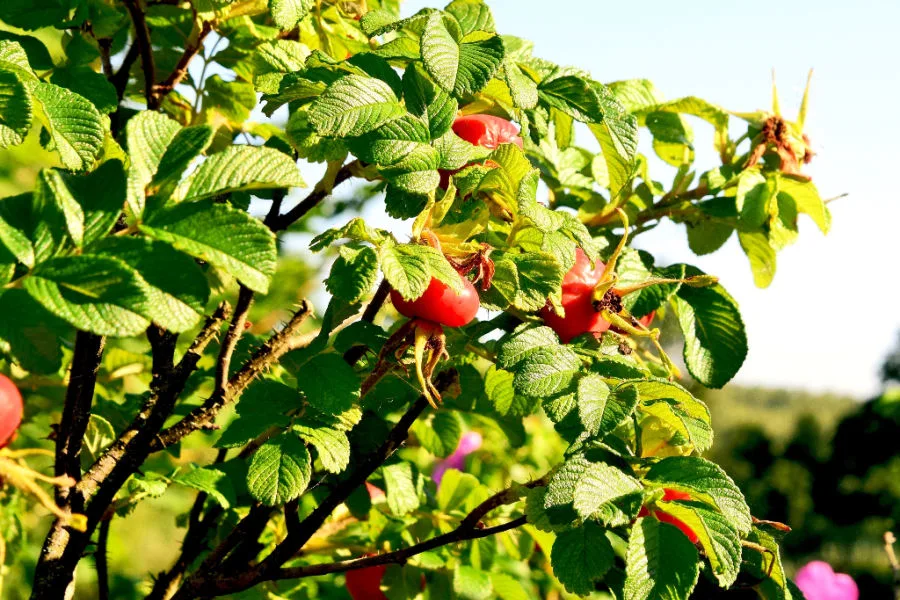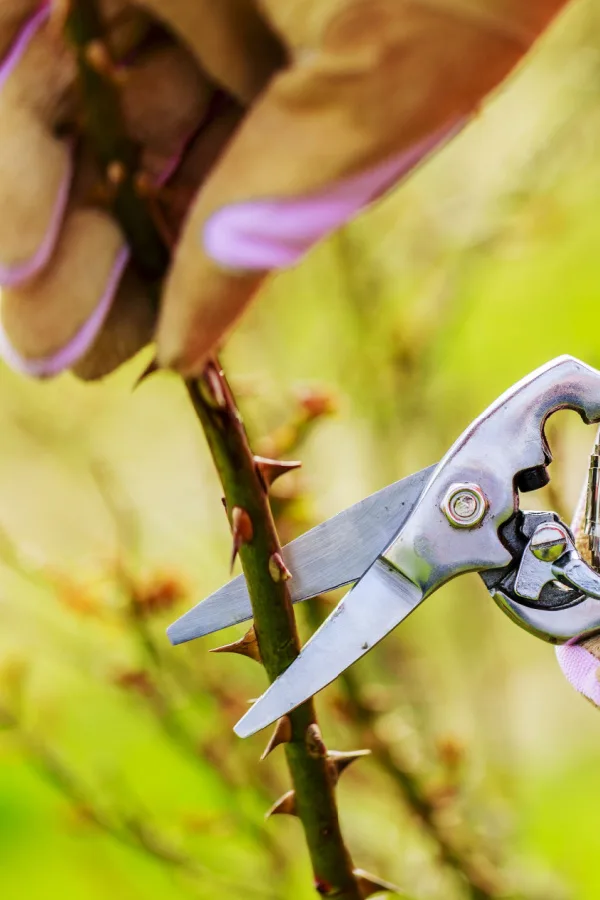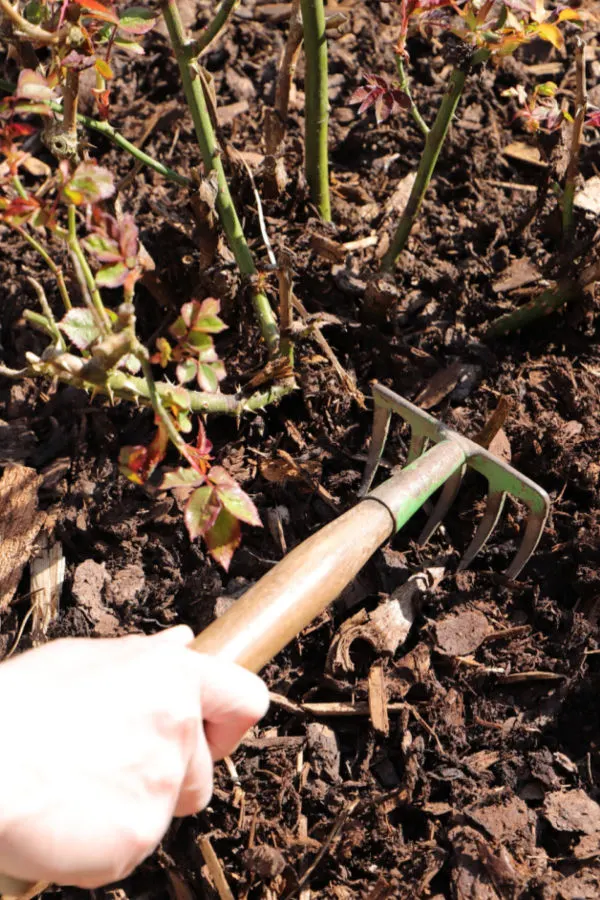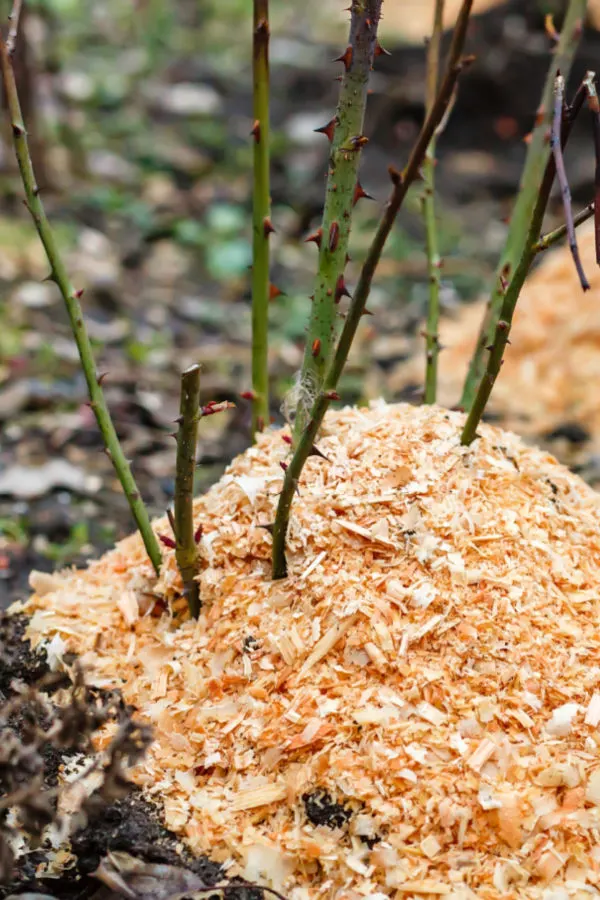When it comes to caring for your rose bushes this fall, what you do now can play a huge role in not only how well they survive winter – but also in just how well your roses bloom and perform next spring and summer.
Roses can be a bit confusing when it comes to fall care. We know this just by the sheer amount of questions that come into our inbox each and every fall. Questions such as:
- Should I be pruning my roses in the fall or let them be?
- Is fertilizing my rose bush in the fall a good idea?
- Do I need to mulch my roses before the first frost or freeze?

One thing is for sure, if left to fend for themselves through winter without any fall preparation or help, most rose bushes will have a high probability of sustaining some type of winter damage. Or even worse, completely freeze out.
But here is where a lot of the confusion comes in – you can also put your roses at risk of damage by providing too much care. In fact, quite often, excessive fall care leads to even more damage than when providing no care at all.
With all of that in mind, today’s article can hopefully shed some light on just exactly what you should be doing to your rose bushes in the fall – and what you shouldn’t!
Pruning Before Winter
Whether you grow hybrid roses, climbing roses, or shrub roses, pruning should be kept to the bare minimum in the fall. Excessive pruning will leave your roses vulnerable to all kinds of winter damage.
Once a rose bush is pruned, it is a signal to the plant to attempt to regrow. This isn’t a problem in February when the bush is completely dormant since it can’t actively grow. However, if you prune in the early fall, the rose bush will attempt to grow if the weather stays warm enough.

That new growth is dangerous because it puts the plant at risk of freezing out as winter hits full force. Save major pruning for when the plant is in full dormancy in late winter, only removing renegade branches in late fall.
If you have a newly planted rose, don’t prune at all the first year. Newly planted rose bushes do not have extensive roots and are the most vulnerable of all. Instead, allow new roses to keep all of their branches and stems to strengthen their resources with a full year of growing.
Fertilizing – Fall Rose Bush Care
In addition to excessive pruning, fertilizing should always be avoided in the fall as well. This same advice actually applies to nearly all perennial plants.
Fertilizing too late in the growing season can fool plants into a new growth mode. Just as with pruning, the tender late growth is easily susceptible to winter damage as the temperature drops. To be safe, stop all fertilizing in mid-August to avoid potential late season growth.
Protecting Rose Bushes For Winter
Now on to one of the most important subjects when it comes to fall rose bush care – protecting them for winter! First and foremost, how you will protect your rose bushes for winter will all depend on two main factors – the variety of roses you are growing, and your climate.
With that in mind – here is a look at how to handle each variety with your climate in mind.

Protecting Shrub Roses – Fall Rose Bush Care
Shrub roses are the easiest of all to care for and require little preparation for winter. Once a few frosts have put the plant into full dormancy, remove the leaves that have fallen to the ground. These can overwinter insects and disease, and it’s best to get them away from the plant.
Finish by applying a few inches of compost around the base of the shrub. Unless you live in an ultra-cold winter environment, no additional protection is needed.
Protecting Hybrid & Tea Roses – Fall Rose Bush Care
Hybrid and tea roses, along with climbing roses require a bit more help to make it through winter unscathed. As with the shrub roses, begin by removing any leaves that have fallen and gathered around the bush.
Next, apply a 6″ to 8″ layer of mulch or sawdust around the base of the shrub, being careful to cover any grafts or unions at the base of the plant. These are the most vulnerable of all to winter damage. Do not mound up existing mulch from around the plant for this task.
This can expose roots of the bush and put them at risk through the winter. Instead, use additional mulch or sawdust to cover. If you live in an area with extremely cold winters, you can also cover your plants with Drawstring Plant Covers, or use PVC pipe to make your own.
These, in addition to mounding saw dust or mulch over the crown and base can add an extra layer of protection. Be sure to remove them as spring nears to allow the rose bush to grow freely.
Climbing Roses – Fall Rose Bush Care
Climbing roses need more protection against the wind than anything. Their canes can easily sustain damage from strong winds or heavy ice and snow.
The best way to protect a climbing rose is to remove the canes from the trellis and tie around them with a wire or rope to hold the canes together. Next, lay the canes down on the ground and apply a four to six inch layer of mulch to protect them over winter.

If this is not possible due to the size or location, at least tie the canes together to the structure. This will help support them through winter. In addition, mound a solid 6″ to 8″ layer of sawdust or wood chips around the base.
Here is to a little fall rose care. And putting your rose bushes to bed successfully for a long winter’s nap! For more on fall bed care, check out How To Clean Up Your Flowerbeds Before Winter. Happy Gardening – Jim and Mary

